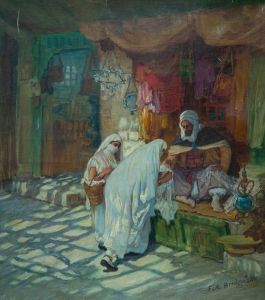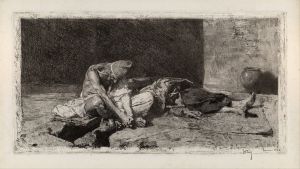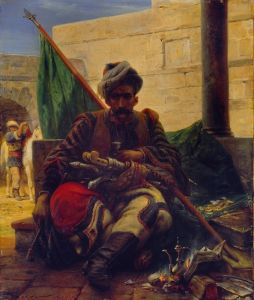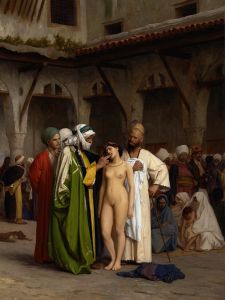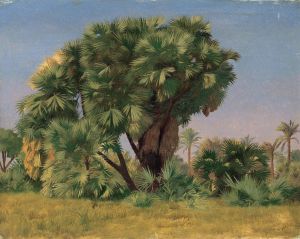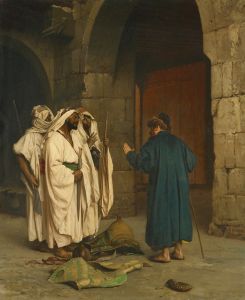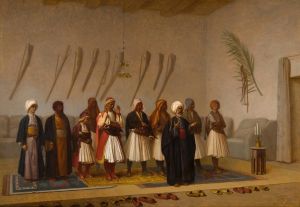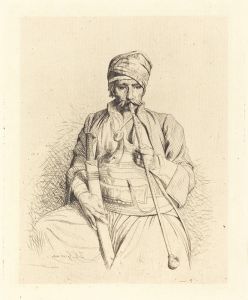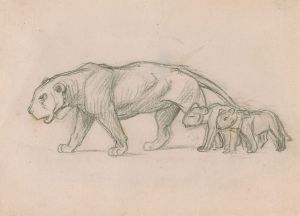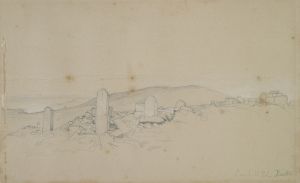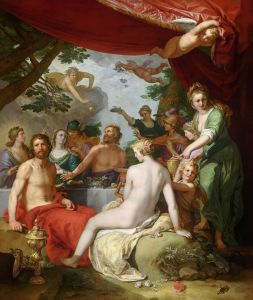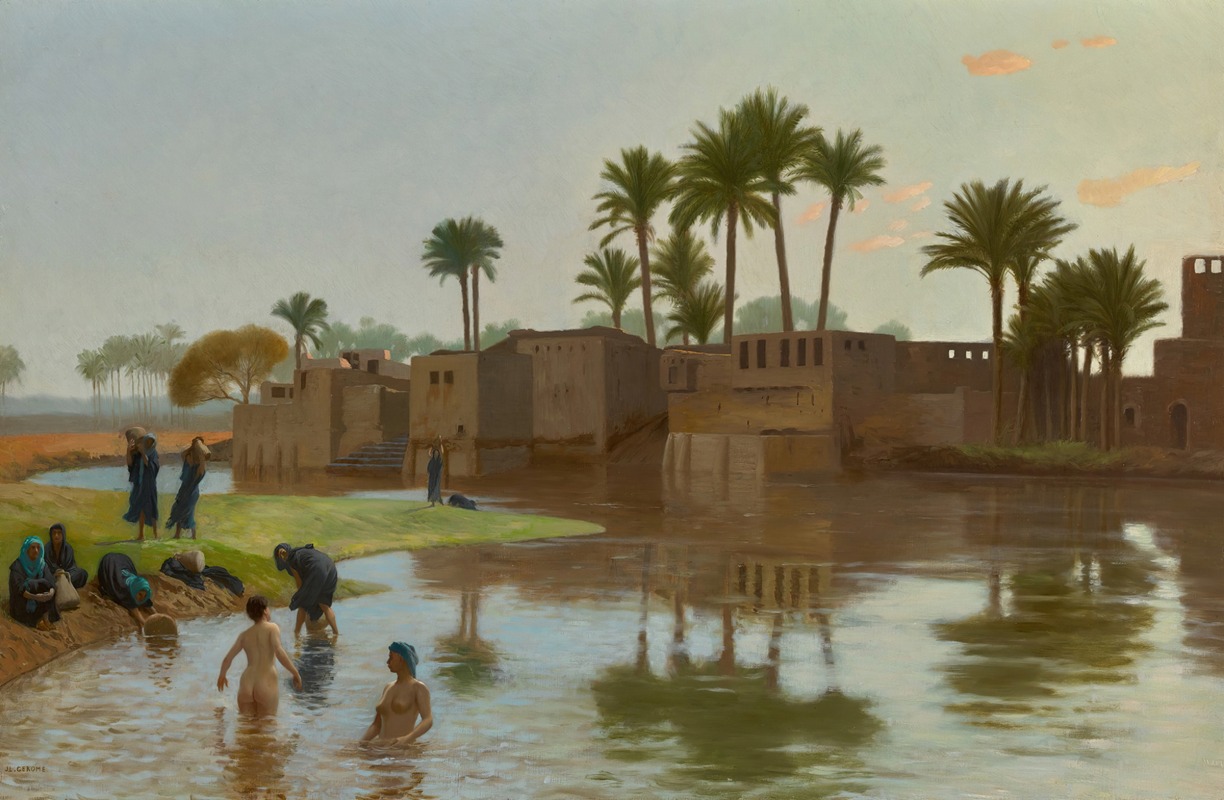
Femmes fellahs au bain
A hand-painted replica of Jean-Léon Gérôme’s masterpiece Femmes fellahs au bain, meticulously crafted by professional artists to capture the true essence of the original. Each piece is created with museum-quality canvas and rare mineral pigments, carefully painted by experienced artists with delicate brushstrokes and rich, layered colors to perfectly recreate the texture of the original artwork. Unlike machine-printed reproductions, this hand-painted version brings the painting to life, infused with the artist’s emotions and skill in every stroke. Whether for personal collection or home decoration, it instantly elevates the artistic atmosphere of any space.
Jean-Léon Gérôme was a prominent 19th-century French painter and sculptor, known for his detailed and historically themed works. One of his paintings, "Femmes fellahs au bain," exemplifies his fascination with Orientalism, a genre that depicted the Middle East and North Africa through a Western lens. Gérôme's works often reflect the Western fascination with the exotic and the 'other,' a common theme during the period of European colonial expansion.
"Femmes fellahs au bain" translates to "Fellah Women at the Bath." The term "fellah" refers to peasant farmers in the Middle East and North Africa, particularly in Egypt. Gérôme's painting captures a scene of these women in a bathing setting, a subject that aligns with the Orientalist interest in depicting intimate and private moments of life in the East, often with an emphasis on the sensual and the picturesque.
Gérôme's attention to detail and his academic style are evident in this work. He was known for his precise and polished technique, which he achieved through extensive studies and travels. Gérôme traveled to Egypt and other parts of the Middle East several times, and these journeys greatly influenced his work. His paintings often feature accurate architectural details and costumes, reflecting his commitment to portraying the settings with a degree of authenticity, even if the scenes themselves were romanticized or imagined.
In "Femmes fellahs au bain," Gérôme likely employed his characteristic use of light and shadow to enhance the three-dimensionality of the figures and the setting. His use of color would have been carefully considered to evoke the warmth and vibrancy of the Middle Eastern environment. Gérôme's ability to capture texture, whether in the softness of skin or the intricate patterns of textiles, adds to the realism and allure of the scene.
The painting fits within the broader context of Gérôme's oeuvre, which often explored themes of daily life, historical events, and mythological subjects, all rendered with a meticulous eye for detail. His works were celebrated for their technical prowess and were popular among both the public and collectors during his lifetime.
However, Gérôme's work, like that of many Orientalist artists, has been critiqued for its portrayal of Eastern cultures through a Western perspective. Critics argue that such works often perpetuated stereotypes and exoticized the subjects, contributing to a skewed understanding of the cultures depicted. Despite these critiques, Gérôme's paintings remain significant for their artistic merit and their role in the history of 19th-century art.
"Femmes fellahs au bain" is a testament to Gérôme's skill as a painter and his ability to capture the imagination of his audience. While the painting itself may not be as widely known as some of his other works, it contributes to the rich tapestry of Orientalist art and offers insight into the cultural exchanges and perceptions of the time.
Overall, Jean-Léon Gérôme's "Femmes fellahs au bain" is a work that reflects both the artistic achievements and the cultural complexities of its era, providing a window into the 19th-century fascination with the East and the artistic endeavors that sought to capture its essence.





